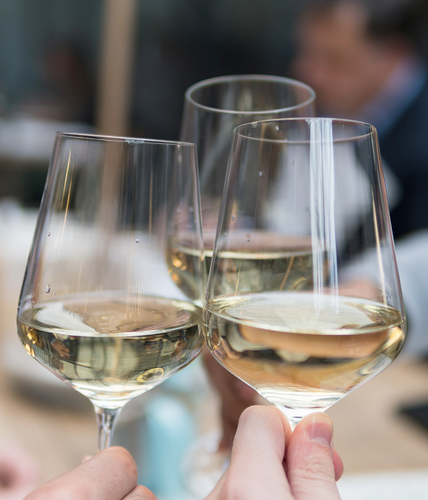THE BEAUTY OF HIGH-ACID WHITES
In the wine community the term “high-acid,” is used for wines that contain an abundance of noticeable, mouth-watering acidity. Acidity is critical when creating a balanced and complex wine and protects the wine against certain bacteria and spoilage yeasts. High-acid whites tend to be fresher, crisper, fruitier, and more tart than low acid white wines. Without enough acid, the wine is drinkable, but there’s nothing really driving you to take another sip.
A few factors that set high-acid white wines apart from medium and low-acid white wines are the individual grape variety, where the grapes are grown, soil, climate, and lastly, the winemaker’s influence.
Grapes contain a multitude of different acids. Early in the grapes ripening cycle, malic acid and tartaric acid are most prevalent. Malic is the acid that you taste in under-ripe green apples. As grapes mature and develop on the vine, acid naturally drops. Here’s where climate plays a significant role. Cool-climate growing regions have a lower-than-average growing temperature or have what is referred to as a diurnal temperature swing. A diurnal temperature swing happens when grapes have enough sunshine to ripen during the day but then can relax and retain acidity with the temperature drop at night.
Winemakers can decide when to harvest the grapes so as to maintain the ideal amount of acidity for the wine they are making. Once in the winery they can choose to transfer some of that tart malic acid and convert it to a softer lactic acid in a process called malolactic fermentation or malolactic conversion. This is the type of acid you taste and feel in a buttery, oaked Chardonnay.
For high-acid white wines such as our Riesling or Stratos white blend, the pleasure stems from the crisp and refreshing acidity and the prevalent aromatics provided by each grape. Here the aromatics would be muted if put through malolactic conversion.
Riesling is known for its soaring acidity and delicate flavorful characteristics of stone fruits such as peaches and apricots. It’s quite particular about where it’s grown and prefers cooler sites. It’s considered by many to be one of the most original and noble white grape varieties in the world. Our Riesling is dry with integrated high acidity that makes it wonderful on its own or paired with an array of foods such as sushi, salmon, prawns, oysters, lemon-herbed chicken, and even curries.
Our Stratos White Blend contains four grape varieties: Sauvignon Blanc, Viognier, Chardonnay, and Muscat. Each contributes to making the wine aromatic and unique. Even the 1% addition of Muscat adds a pop of flavor to the overall blend. This wine is meant for summer sipping and pairings such as goat cheese, lightly seasoned vegetables, oysters, grilled fish tacos, and so much more.
There’s so much to be enjoyed with high-acid whites. Happy sipping!
- Shelly Fitzgerald, Wine Education Specialist, CS, CSW, AWE, WSET Level 3
